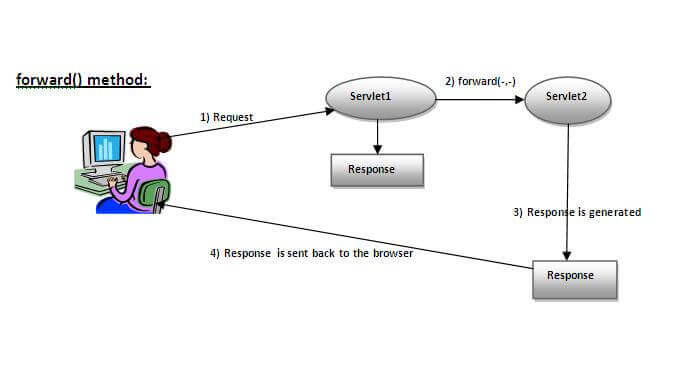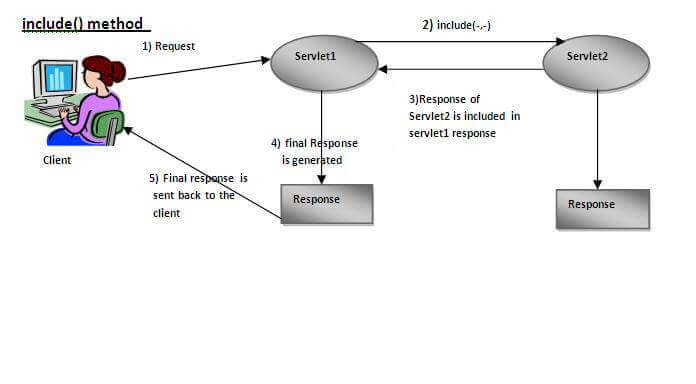
A request servlet is a Java class that is used to handle HTTP requests from a web client. Servlets are created and deployed on a Java web server, such as Tomcat or Jetty. When a client makes an HTTP request to a servlet, the web server creates an instance of the servlet and passes it the request object. The servlet then processes the request and generates a response object, which is returned to the web server.
Servlets are used to implement a wide variety of web applications, including:
- Dynamic web pages
- Web services
- File downloads
- Form processing
- Authentication and authorization
- Session management
How do request servlets work?
When a client makes an HTTP request to a servlet, the web server creates an instance of the servlet and passes it the request object. The request object contains information about the request, such as the HTTP method used, the request headers, and the request body.
The servlet then processes the request and generates a response object. The response object contains information about the response, such as the HTTP status code, the response headers, and the response body.
The response object is then returned to the web server, which sends it back to the client.
Benefits of using request servlets
There are several benefits to using request servlets:
- Servlets are easy to develop and deploy.
- Servlets are portable and can be used on any Java web server.
- Servlets are scalable and can handle a large number of concurrent requests.
- Servlets provide a powerful and flexible way to implement web applications.
Example of a request servlet
The following is a simple example of a request servlet:
import javax.servlet.ServletException; import javax.servlet.http.HttpServlet; import javax.servlet.http.HttpServletRequest; import javax.servlet.http.HttpServletResponse; public class HelloServlet extends HttpServlet { @Override protected void doGet(HttpServletRequest req, HttpServletResponse resp) throws ServletException, IOException { resp.setContentType("text/html"); resp.getWriter().println("<h1>Hello, world!</h1>"); } } This servlet simply prints the message "Hello, world!" to the client.
To deploy the servlet, you would need to create a web.xml file in the WEB-INF directory of your web application. The web.xml file defines the servlets that are deployed in your web application.
The following is an example of a web.xml file that deploys the HelloServlet:
<?xml version="1.0" encoding="UTF-8"?> <web-app xmlns="http://xmlns.jcp.org/xml/ns/javaee" xmlns:xsi="http://www.w3.org/2001/XMLSchema-instance" xsi:schemaLocation="http://xmlns.jcp.org/xml/ns/javaee http://xmlns.jcp.org/xml/ns/javaee/web-app_4_0.xsd" version="4.0"> <servlet> <servlet-name>HelloServlet</servlet-name> <servlet-class>com.example.HelloServlet</servlet-class> </servlet> <servlet-mapping> <servlet-name>HelloServlet</servlet-name> <url-pattern>/hello</url-pattern> </servlet-mapping> </web-app> Once the servlet is deployed, you can access it by sending an HTTP request to the following URL:
http://localhost:8080/hello The web server will then create an instance of the HelloServlet and pass it the request object. The servlet will then print the message "Hello, world!" to the client.
Request servlet lifecycle
The request servlet lifecycle has the following stages:
- Initialization: The servlet container creates an instance of the servlet and calls the servlet's init() method. The init() method is used to initialize the servlet.
- Service: The servlet container calls the servlet's service() method to handle incoming requests. The service() method takes a request object and a response object as input and generates a response object as output.
- Destruction: The servlet container calls the servlet's destroy() method to destroy the servlet. The destroy() method is used to clean up any resources that the servlet is using.
Request servlet API
The request servlet API provides a number of classes and interfaces that are used to develop and deploy request servlets.
The following are some of the important classes and interfaces in the request servlet API:
ServletRequest: This interface represents a client request. It provides methods for accessing the request headers, parameters, and
WebServlet 2.3 Filter that exposes the request to the current thread, through both LocaleContextHolder and RequestContextHolder. To be registered as filter in web.xml.. WebAll Known Implementing Classes: HttpServletRequestWrapper, ServletRequestWrapper. public interface ServletRequest. Defines an object to provide client request information to. WebMethod Summary. boolean. authenticate ( HttpServletResponse response) Use the container login mechanism configured for the ServletContext to authenticate the user.
HttpServletRequest and HttpServletResponse Theory

Source: Youtube.com
#7 Servlet and JSP Tutorial | RequestDispatcher | Calling a Servlet from Servlet

Source: Youtube.com
What Is A Request Servlet, HttpServletRequest and HttpServletResponse Theory, 6.27 MB, 04:34, 263,368, Telusko, 2017-03-10T16:50:43.000000Z, 2, RequestDispatcher in Servlet - javatpoint, 384 x 675, jpg, , 3, what-is-a-request-servlet
What Is A Request Servlet. WebServlet – Request Interface. When a Servlet accepts a call from a client, then it receives two objects, one is a ServletRequest and the other is the ServletResponse. ServletRequest encapsulates the Communications from the client to the server, while.
Servlet and JSP complete playlist : goo.gl/JXo6BB
In this video we will see :
- Life cycle of servlet
- Request object
- Response object
- Type of data
Check out our website: telusko.com
Follow Telusko on Twitter: twitter.com/navinreddy20
Follow on Facebook:
Telusko : facebook.com/teluskolearnings
Navin Reddy : facebook.com/navintelusko
Follow Navin Reddy on Instagram: instagram.com/navinreddy20
Subscribe to our other channel:
Navin Reddy : youtube.com/channel/UCxmkk8bMSOF-UBF43z-pdGQ?sub_confirmation=1
Telusko Hindi :
youtube.com/channel/UCitzw4ROeTVGRRLnCPws-cw?sub_confirmation=1
What Is A Request Servlet, WebMethod Summary. boolean. authenticate ( HttpServletResponse response) Use the container login mechanism configured for the ServletContext to authenticate the user.

RequestDispatcher in Servlet - javatpoint - Source: javatpoint.com

RequestDispatcher in Servlet - javatpoint - Source: javatpoint.com

Web Development with JEE: A Deep Dive into Java Servlets and Filters | by Mohamed Enn | Medium - Source: medium.com
What is http servlet request www.geeksforgeeks.org › servlet-request-interfaceServlet - Request Interface - GeeksforGeeks
What is http servlet request Servlet – Request Interface. When a Servlet accepts a call from a client, then it receives two objects, one is a ServletRequest and the other is the ServletResponse. ServletRequest encapsulates the Communications from the client to the server, while ServletResponse encapsulates the Communication from the Servlet back to the client. What is http servlet request and response.
What is http servlet request and response
What is http servlet request and response What is call servlet in java.
What is call servlet in java
What is call servlet in java What is servlet request and response.
.
What is servlet request and response
What is servlet request and response What is a servlet request.
.
What is a servlet request
What is a servlet request What is servlet request and response.
howtodoinjava.com › java › servletsGuide to Java Servlets - HowToDoInJava
.
www.javatpoint.com › servletrequestServletRequest Interface - javatpoint
There are many methods defined in the ServletRequest interface. Some of them are as follows: Method. Description. public String getParameter (String name) is used to obtain the value of a parameter by name. public String [] getParameterValues (String name) returns an array of String containing all values of given parameter name. .
.
.
.
docs.oracle.com › javaee › 717.1 What Is a Servlet? - Java Platform, Enterprise Edition ...
A servlet is a Java programming language class used to extend the capabilities of servers that host applications accessed by means of a request-response programming model. Although servlets can respond to any type of request, they are commonly used to extend the applications hosted by web servers. For such applications, Java Servlet technology , .
.
.
www.infoworld.com › article › 2257326What are Java servlets? Request handling for Java web ...
Credit: P.O. Arnäs. Request handling is the bread and butter of Java web application development. In order to respond to requests from the network, a Java web application must first determine , .
www.geeksforgeeks.org › introduction-java-servletsIntroduction to Java Servlets - GeeksforGeeks
Java Servlets are the Java programs that run on the Java-enabled web server or application server. They are used to handle the request obtained from the web server, process the request, produce the response, and then send a response back to the web server. The properties of Servlets are as follows: Servlets work on the server side. .
www.baeldung.com › intro-to-servletsIntroduction to Java Servlets | Baeldung
What is request dispatcher in servlet.
What is request dispatcher in servlet
What is request dispatcher in servlet What is http servlet request.
Post a Comment